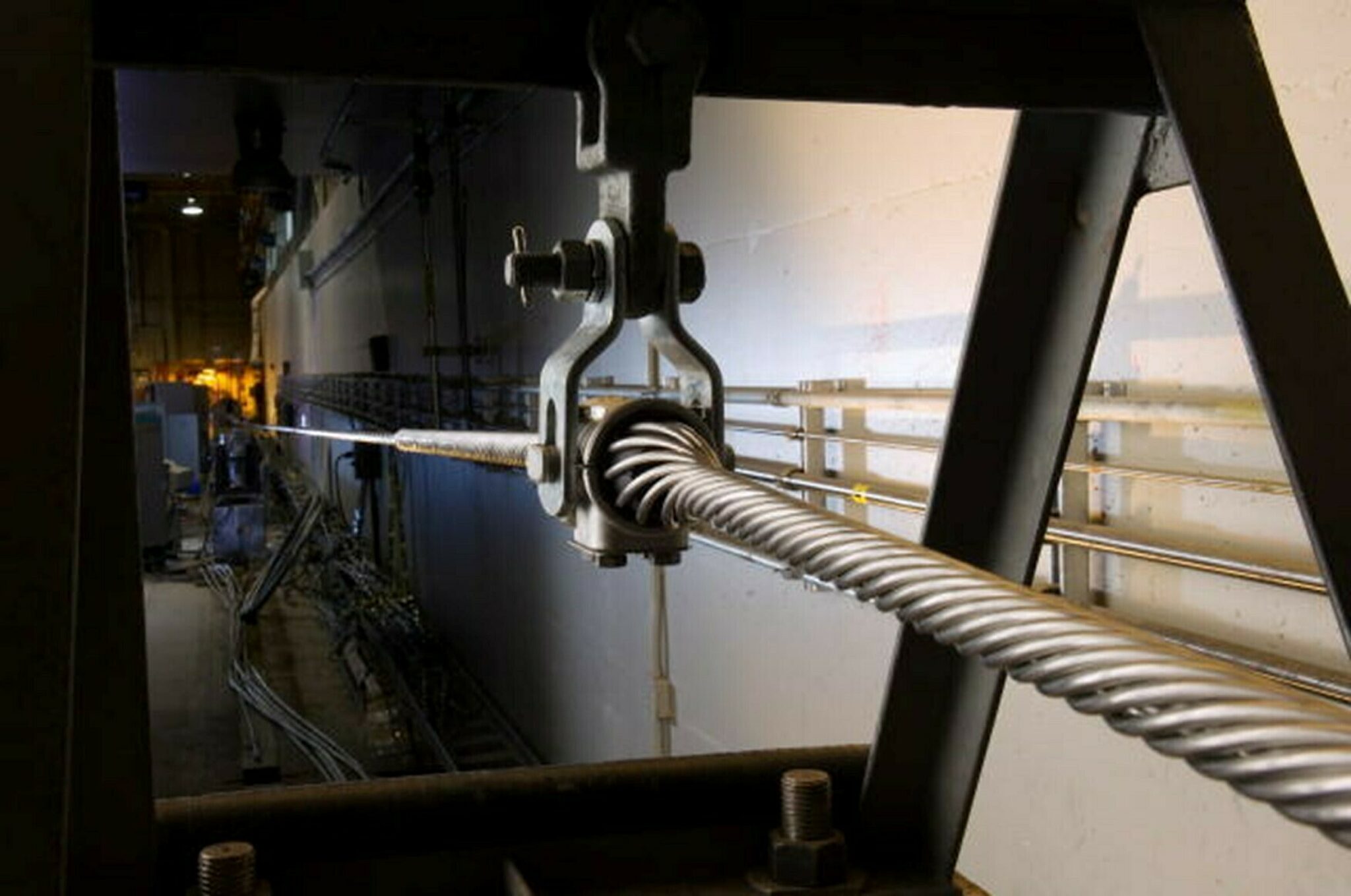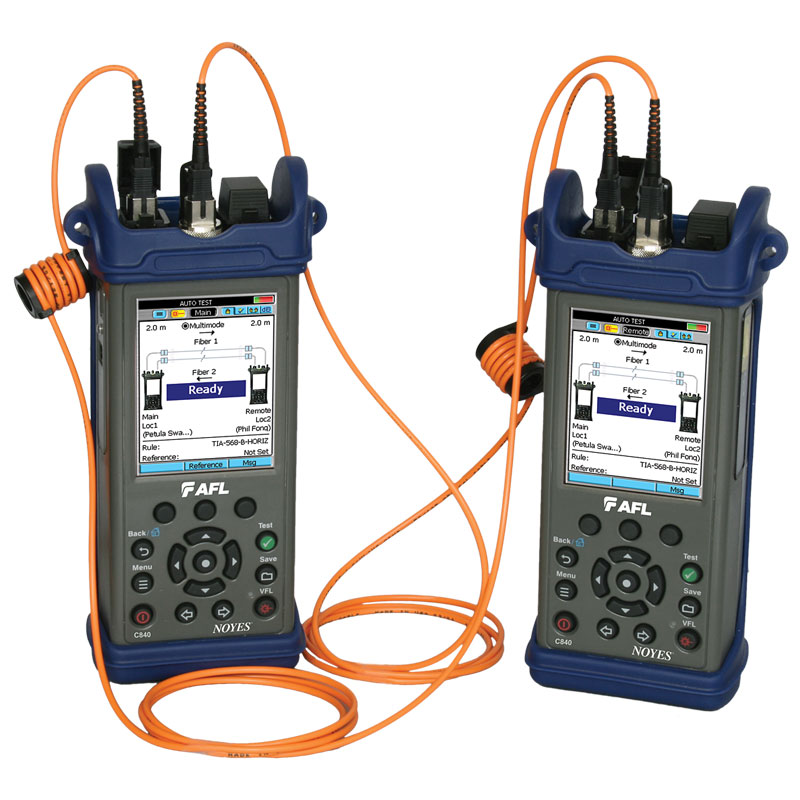A advanced optical fibre diameter analyser is critical for fibre manufacturing.
A advanced optical fibre diameter analyser is critical for fibre manufacturing.
Blog Article
The Function of Optical Fibre Testing in Ensuring Quality and Effectiveness in Connection Solutions
In today's quickly progressing electronic landscape, the importance of optical fiber screening can not be overemphasized, as it functions as a keystone for making certain the high quality and effectiveness of connectivity services. By employing a range of testing methodologies, consisting of OTDR and loss evaluations, organizations can proactively determine and reduce potential network issues that might impede performance. In addition, regular screening not just lines up with industry criteria however likewise leads the way for boosted information transmission. As innovation proceeds to development, the future of optical fibre screening positions interesting obstacles and chances that warrant closer assessment.
Significance of Optical Fiber Screening
The relevance of optical fiber testing can not be overstated in ensuring the stability and efficiency of communication networks. As the backbone of contemporary telecoms, optical fibres help with high-speed information transmission, making their reliability critical to operational success. Examining works as a positive action to identify prospective problems such as signal loss, depletion, and physical damages, which can compromise network performance.
Routine testing allows for the verification of setup high quality and the discovery of flaws that could impact data stability - robotic vision. By utilizing extensive screening methods, network drivers can mitigate the risks related to network failures, including downtime and monetary losses. Optical fibre testing ensures conformity with market requirements and laws, improving the general quality of service provided to end-users.
Inevitably, the methodical analysis of optical fibers adds to the longevity and efficiency of interaction systems. It makes it possible for stakeholders to make educated choices pertaining to upkeep, upgrades, and troubleshooting. In a landscape where data is progressively important, prioritizing optical fiber testing is vital to maintaining robust and reliable connection solutions, therefore supporting the needs of contemporary digital environments.
Sorts Of Optical Fiber Examinations
Various testing approaches are utilized to guarantee the functionality and integrity of optical fibres within interaction networks. These examinations can be generally categorized right into two main kinds: installation examinations and maintenance examinations.
Setup tests are performed immediately after the installment of optical fibre wires to confirm their efficiency and stability - robotic vision. One of the most common installment tests consist of Optical Time-Domain Reflectometry (OTDR) tests, which assess the high quality of the fibre by determining faults or breaks, and end-to-end loss tests, which gauge the overall optical loss from one end of the fiber to the other
Upkeep tests, on the other hand, are executed regularly to ensure continuous performance and discover potential problems with time. These include visual examination, which checks for physical damages or incorrect installments, and continuity tests, which validate that the signal can pass through the fibre without disruption.
In addition, advanced examinations such as Polarization Setting Diffusion (PMD) and Chromatic Dispersion (CD) tests can be carried out to examine the fiber's efficiency under numerous problems. By using these diverse testing methods, professionals can maintain high standards of top quality and reliability in optical fibre networks.
Benefits of Regular Checking
Routine screening of optical fibers plays a vital duty in keeping the total efficiency and reliability of communication networks. By conducting regular assessments, companies can guarantee that their fibre optic setups fulfill industry criteria and operate efficiently. This positive method assists to identify potential weak points and degradation in time, permitting timely treatments before issues rise.

Cost-effectiveness is an additional benefit. By dealing with minor issues early, companies can prevent the high costs connected with significant repair services or system failings. Normal screening additionally promotes compliance with regulatory demands, making sure that navigate to this site the network adheres to essential safety and security and performance standards.
Common Concerns Recognized
Determining usual issues in optical fibre networks is crucial for maintaining ideal performance and reliability. Various elements can add to interruptions, consisting of physical you can look here damages, bad installation techniques, and ecological impacts.
Physical damages, such as bends, breaks, or abrasions, can dramatically weaken signal quality. Inappropriate installment strategies, consisting of too much stress or poor safeguarding of cords, might result in enhanced depletion and loss of connectivity. In addition, ecological variables such as temperature level changes, dampness access, and rodent disturbance can endanger the stability of the fiber.
Port problems likewise frequently occur, with inappropriate placement or contamination causing boosted insertion loss. Furthermore, splicing errors can introduce substantial signal deterioration otherwise implemented with precision.

Resolving these common problems through normal optical fiber screening not only enhances network integrity but likewise maximizes total efficiency, ensuring that connection solutions continue to be durable and effective.
Future Patterns in Evaluating
As the need for high-speed connection continues to increase, the future of optical fiber testing will increasingly focus on automation and progressed analytics. The combination of expert system (AI) and equipment understanding (ML) in testing procedures will certainly enable much more efficient information analysis and predictive upkeep, minimizing downtime and boosting overall network reliability. Automated testing solutions will streamline the inspection and accreditation of fiber networks, reducing human error and increasing testing throughput.
An additional considerable trend is the adoption of remote testing innovations. As the deployment of fiber networks expands into remote and underserved areas, remote screening capabilities will permit specialists to check and identify network problems without physical presence, thus reducing operational expenses and boosting action times.
Moreover, there will be a shift in the direction of even more extensive screening requirements that encompass not only standard loss dimensions however likewise efficiency metrics such as her response latency and data transfer utilization. This all natural technique will promote much better network management and optimization strategies.
As these trends develop, the optical fiber testing landscape will not just improve the top quality and efficiency of connection solutions but likewise sustain the growing complexities of modern communication networks.
Final Thought
In final thought, optical fiber testing offers as a basic part in preserving the stability and performance of communication networks. The continuous dedication to normal screening not just boosts data transmission yet likewise lines up with market requirements, cultivating integrity in network infrastructures.
Report this page